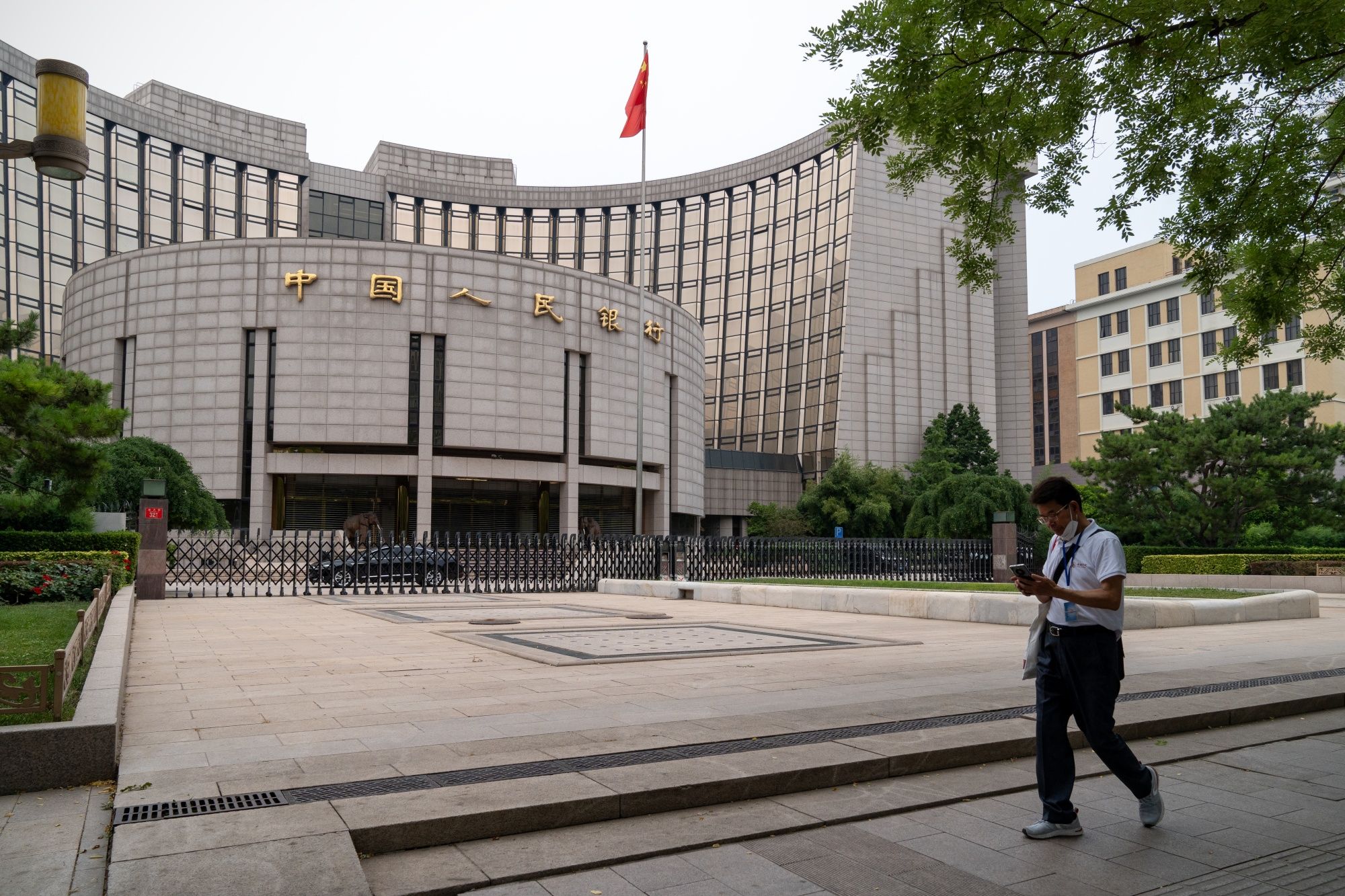Analysis: PBOC's Reduced Yuan Support And Market Reaction

Table of Contents
Reasons Behind the PBOC's Reduced Intervention
The PBOC's decision to lessen its intervention in the Yuan market stems from a confluence of factors. A shift towards a more market-determined exchange rate is evident, reflecting a change in China's economic priorities and global market dynamics.
Strengthening US Dollar
The strengthening US dollar has placed significant downward pressure on the Yuan (CNY). The USD/CNY exchange rate has seen notable increases in recent months, reflecting increased demand for the dollar in global markets.
- Increased demand for the dollar leads to depreciation pressure on the Yuan, making Chinese exports more competitive but potentially impacting import costs.
- The PBOC's reduced intervention reflects a potential shift towards a more market-driven exchange rate, allowing the Yuan to fluctuate more freely based on supply and demand.
- Concerns about potential capital flight due to a weaker Yuan may have also influenced the PBOC's decision to reduce its support. Investors may seek higher returns in stronger currencies, leading to capital outflows from China.
Economic Diversification Strategy
China's ongoing economic diversification strategy plays a significant role in the PBOC's approach to currency management. A less export-dependent economy reduces the need for a weaker Yuan to boost competitiveness.
- Less reliance on export-led growth diminishes the need for artificial devaluation of the Yuan to enhance export competitiveness.
- The emphasis on domestic consumption and technological advancement shifts the focus from external trade to internal economic strength.
- This aligns with a long-term strategy for Yuan internationalization, aiming to establish it as a prominent global currency, less reliant on manipulation for trade advantages.
Inflationary Pressures
Inflationary pressures within China may have also prompted the PBOC to reconsider its level of Yuan support. Maintaining a stable exchange rate while managing domestic price stability presents a delicate balancing act.
- The PBOC needs to balance currency stability with domestic price stability. A weaker Yuan can increase import costs and fuel inflation.
- The PBOC employs various monetary policy tools alongside exchange rate management, such as interest rate adjustments and reserve requirements, to control inflation.
- Recent inflation rates in China, while relatively low compared to some other economies, still present a challenge for policymakers aiming for price stability alongside a stable Yuan. Careful analysis of these figures is crucial for understanding the PBOC’s decision.
Market Reaction to Reduced PBOC Yuan Support
The PBOC's reduced Yuan support has resulted in noticeable changes in the currency markets and broader economic indicators.
Yuan Volatility and Fluctuations
The immediate impact has been increased volatility in the Yuan's exchange rate against major currencies like the US dollar, the Euro, and the Japanese Yen.
- Charts and graphs illustrating Yuan volatility clearly show a period of increased fluctuation following the announcement of reduced PBOC support.
- Compared with historical volatility levels, the recent period shows a significant increase, indicating greater market uncertainty.
- Trading volume and market sentiment suggest increased speculation and uncertainty surrounding the future trajectory of the Yuan.
Impact on Global Markets
The reduced PBOC Yuan support has had ripple effects on global financial markets and investor sentiment.
- Other emerging market currencies have experienced increased volatility in tandem with the Yuan, reflecting concerns about broader global economic stability.
- The potential impact on global trade and supply chains is significant, as fluctuations in the Yuan affect the pricing and competitiveness of Chinese goods in international markets.
- Investor confidence in Chinese assets has shown some degree of fluctuation, reflecting uncertainty about the implications of the PBOC’s policy shift.
Foreign Investment Flows
Changes in foreign direct investment (FDI) and portfolio investment into China following the PBOC's decision are critical to observe.
- Data on inflows and outflows of capital will reveal the actual impact on foreign investment. Analysis of this data is crucial for understanding investor sentiment.
- Investor behavior and risk appetite are likely to be influenced by the increased volatility of the Yuan and the uncertainty surrounding future PBOC policy.
- Policy implications for attracting foreign investment will need to be reviewed in light of this shift towards a more market-driven exchange rate. The PBOC may need to adjust its policies to maintain attractiveness for foreign investors.
Conclusion
The PBOC's reduced support for the Yuan represents a significant shift in China's monetary policy, driven by a complex interplay of factors including a strengthening US dollar, a focus on domestic economic growth, and inflationary pressures. The market reaction has involved increased Yuan volatility and ripple effects on global markets. Understanding the nuances of this change is crucial for investors and businesses operating in or with China. To stay informed about the evolving dynamics of PBOC Yuan Support and its broader implications, continue monitoring economic indicators, policy announcements, and market trends closely. Further analysis on the implications of PBOC Yuan Support levels will be crucial for navigating the complexities of the Chinese economy. Closely watching the USD/CNY exchange rate, inflation data, and foreign investment flows will be essential for understanding the ongoing effects of this significant policy shift.

Featured Posts
-
 The King Of Davoss Decline Exploring The Factors Leading To His Ruin
May 15, 2025
The King Of Davoss Decline Exploring The Factors Leading To His Ruin
May 15, 2025 -
 Can The Rockies Break Their 7 Game Skid Against San Diego
May 15, 2025
Can The Rockies Break Their 7 Game Skid Against San Diego
May 15, 2025 -
 Where To Watch San Diego Padres Games Without Cable In 2025
May 15, 2025
Where To Watch San Diego Padres Games Without Cable In 2025
May 15, 2025 -
 Analyse De Actie Tegen Npo Baas Frederieke Leeflang En De Gevolgen
May 15, 2025
Analyse De Actie Tegen Npo Baas Frederieke Leeflang En De Gevolgen
May 15, 2025 -
 The Rise Of Disaster Betting Examining The Los Angeles Wildfire Example
May 15, 2025
The Rise Of Disaster Betting Examining The Los Angeles Wildfire Example
May 15, 2025
Latest Posts
-
 Tampa Bay Rays Complete Series Sweep Against Padres
May 15, 2025
Tampa Bay Rays Complete Series Sweep Against Padres
May 15, 2025 -
 Padres Clinch Series Victory Against Cubs
May 15, 2025
Padres Clinch Series Victory Against Cubs
May 15, 2025 -
 San Diego Padres Defy Dodgers Domination Attempts
May 15, 2025
San Diego Padres Defy Dodgers Domination Attempts
May 15, 2025 -
 Rays Sweep Padres Dominant Performance Secures Series Victory
May 15, 2025
Rays Sweep Padres Dominant Performance Secures Series Victory
May 15, 2025 -
 Three Hit Performance By Rookie Simpson Propels Rays To Padres Sweep
May 15, 2025
Three Hit Performance By Rookie Simpson Propels Rays To Padres Sweep
May 15, 2025
